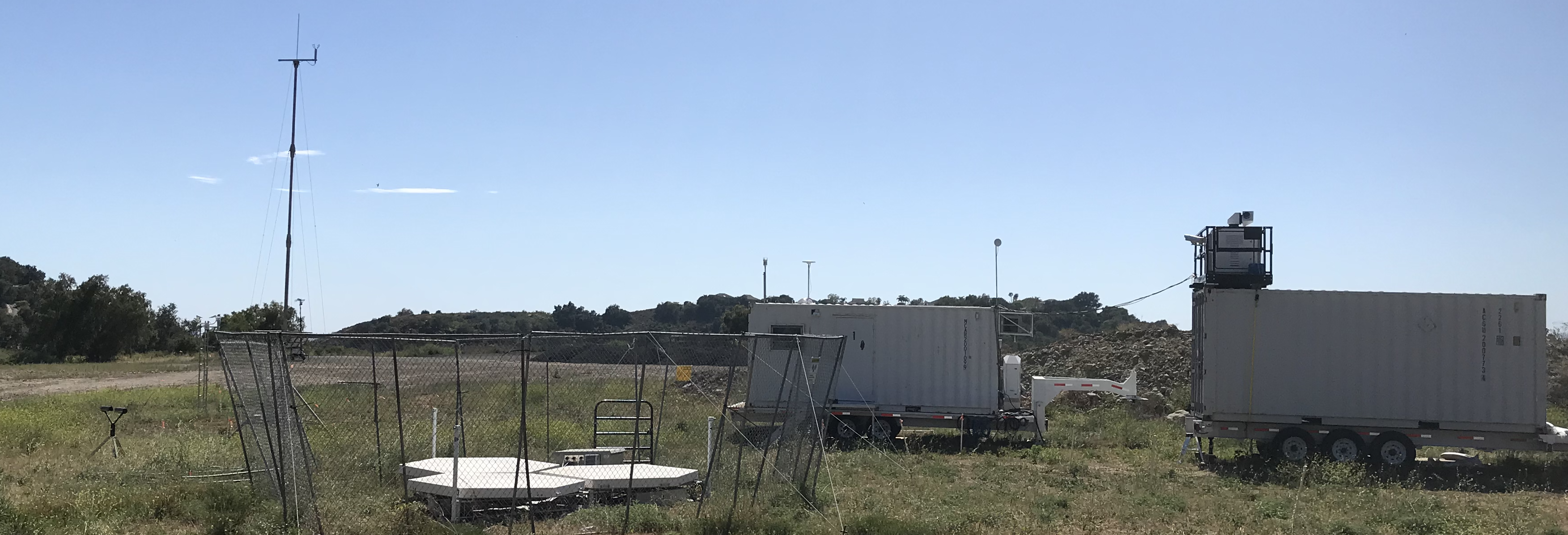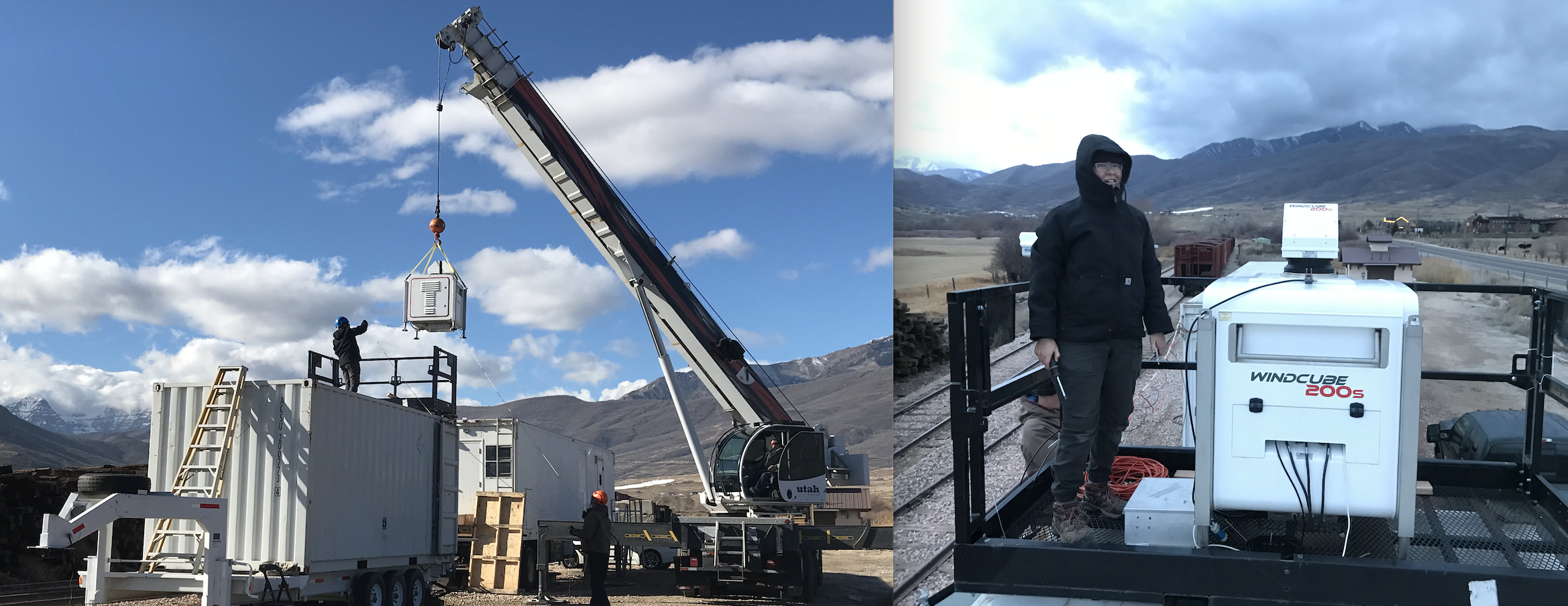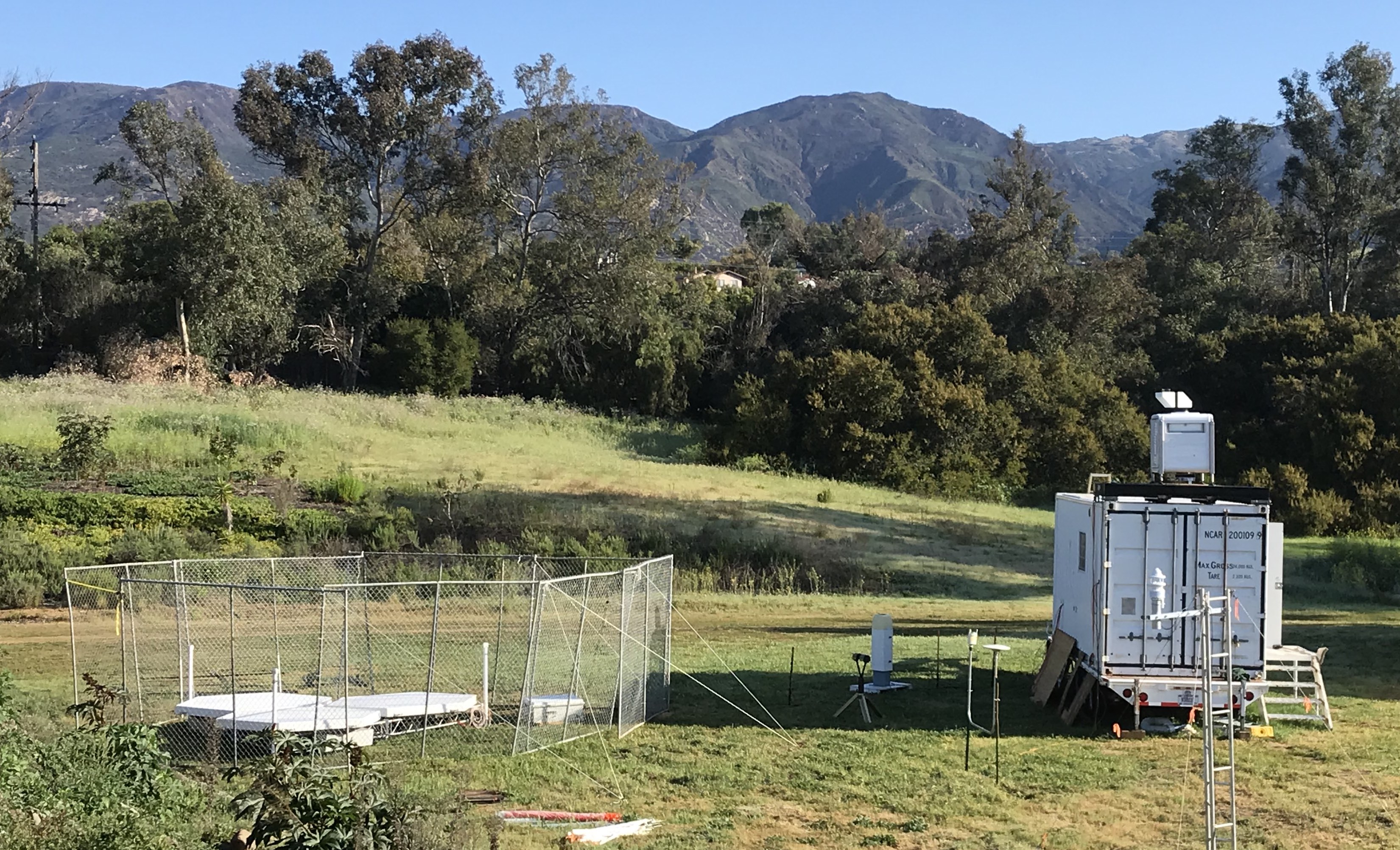Integrated Sounding System (ISS)
The Integrated Sounding System (ISS) is a dynamic meteorological observing system that combines surface, sounding, and remote sensing instrumentation to provide a comprehensive description of lower atmospheric thermodynamics and winds.
- The core instruments are a balloon-borne radiosonde sounding system, a radar wind profiler for high-resolution measurements of wind components from the surface to the mid-troposphere, a scanning Doppler wind lidar, a radio acoustic sounding system for virtual temperature profiles, and a meteorological station that collect surface wind, pressure, thermodynamics, radiation and precipitation data.
- Other instruments such as disdrometers, radiometers, cameras, and air quality sensors can be added to suit the needs of the experiment.
- Our newest instrument is a LR Tech ASSIST-II InfraRed Spectrometer. This is a passive remote sensing device that measures the IR spectrum emitted by the atmosphere. By using Optimal Estimation techniques, the temperature and humidity profile of the boundary layer can be derived from these spectra.
- Measurements from all instruments are ingested into a data management, display, and communications infrastructure to provide raw data and data products in real-time or near real-time to researchers remotely or on-site.
Requestable Instruments:
| Radar Wind Profilers | 449 MHz Modular Wind Profiler 915 MHz Vaisala LAP3000 DBS 1290 MHz Radian LAP3000 DBS RASS (Radio Acoustic Sounding System) |
|---|---|
| Wind Lidar | Vaisala / Leosphere Windcube 200S Scanning Doppler lidar |
| Ceilometers | Vaisala CL31, CL51 and CL61 (with depolarization channel) |
| Radiosonde Soundings | Vaisala MW41 / RS41 radiosondes iMet-3050A / iMet-1 radiosondes |
| Passive remote sensing | LR Tech ASSIST-II IR Spectrometer |
| Surface Meteorology | Gill Wind Observer (2D sonic anemometer) Hukseflux NR01 4-component radiation HSA Tipping bucket rain gauge Lufft WS300 (Temp/RH/Pressure) Lufft WS800 (Wind/Precip/T/RH/P) OTT Parsivel-2 optical disdrometer Vaisala PTB210 / PTB330 (Pressure) CS125 Visibility 10 or 3 meter towers |
| GPS Integrated Water Vapor | Trimble NetR8 with Vaisala WXT |
| Auxiliary Sensors | PurpleAir aerosol sensor Cameras - all-sky, webcam, panoramic |
Radar wind profilers
EOL has a variety of wind profilers available for deployment with the ISS. Our research system is the 449-MHz Modular Wind Profiler which is a scalable system being developed to provide extended altitude coverage and greater flexibility. Spaced antenna techniques enable the system to make rapid wind measurements. This system is deployable in various configurations ranging from a small network of boundary layer profilers to a mid-troposphere radar and ultimately a full-troposphere radar.
Our profilers are available in the following configurations:
- Standard LAP3000 (915 or 1290 MHz) DBS (Doppler Beam Swinging) boundary layer profilers
- Advanced 449 MHz Modular Wind Profiler, consisting of multiple antenna modules that are used to build up radars scalable to the problem being studied. This enables either multiple small boundary layer radars to be deployed, or alternatively a larger radar capable of probing much higher into the troposphere. Spaced antenna techniques are used to enable very fast wind measurements.
- RASS (Radio Acoustic Sounding System) can be added to measure virtual temperature in the boundary layer.
The ISS platforms are available in a variety of configurations:
Currently up to three ISS can be deployed in the standard configuration, one mobile MISS, and one ship-borne system.
- Standard
- The standard systems are typically deployed at fixed locations for periods of weeks to months.
- Mobile
- The mobile system (MISS) is a trailer mounted system used for shorter, more rapid deployment such as storm chasing and outreach activities
- Ship-borne
- The ship-borne configuration is deployed on research vessels for ocean meteorology studies.
The ISS have been deployed in over 60 field campaigns, and a list of the more recent campaigns appears in the "Deployments" box on the right hand side of this web page. The system is commonly used for boundary layer meteorology studies, but has also contributed to studies in topics ranging from tropical meteorology, severe weather, mountain meteorology, ocean-atmosphere exchange, precipitation, microphysics, wind energy, agriculture, atmospheric chemistry, atmospheric gravity waves, to education and outreach.
Citations
When referencing the NCAR Integrated Sounding System (ISS) in publications or proposals, please use the identifier 10.5065/D6348HF9 -- for example as a citation:
NSF NCAR - Earth Observing Laboratory, (1992-Present). NCAR Integrated Sounding System (ISS) https://doi.org/10.5065/D6348HF9
Please be careful of line breaks when cutting and pasting the above text, and feel free to reformat to fit your document. Additional citation styles are available at DataCite or CrossCite.
If you wish to additionally cite the First Use paper associated with this Facility/Instrument, then please use:
Parsons D, Dabberdt W, Cole H, Hock T, Martin C, Barrett AL, Miller E, Spowart M, Howard M, Ecklund W, Carter D. The integrated sounding system: Description and preliminary observations from TOGA COARE. Bulletin of the American Meteorological Society. 1994 Apr; 75(4): 553-567.



